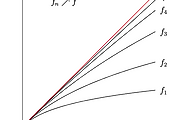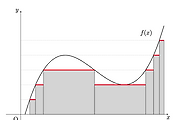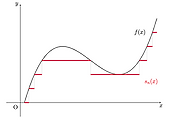
Comparison with the Riemann Integral
먼저 혼동을 막기 위해 Lebesgue measure
정리.
쉽게 풀어서 적어보면, (1)은
또한 (2)는 리만 적분 가능성에 대한 동치 조건을 알려줍니다. Almost everywhere라는 조건이 붙었기 때문에,
증명.
그러면 리만 적분의 정의로부터
이제 measurable simple function
그러므로
위 사실을 종합하면
(1) 위 논의에 의해
(2) 만약
위 부등식에 의해
따라서,
아래는 증명의 부산물입니다.
참고.
이제 리만 적분의 유용한 성질들을 가지고 와서 사용할 수 있습니다.
- 닫힌 유계 구간
- 마찬가지로
'Mathematics > Measure Theory' 카테고리의 다른 글
| 07. Dominated Convergence Theorem (0) | 2023.04.07 |
|---|---|
| 06. Convergence Theorems (0) | 2023.03.25 |
| 05. Lebesgue Integration (1) | 2023.02.13 |
| 04. Measurable Functions (0) | 2023.02.06 |
| 03. Remarks, Measure Spaces (0) | 2023.01.24 |
| 02. Construction of Measure (0) | 2023.01.23 |




댓글